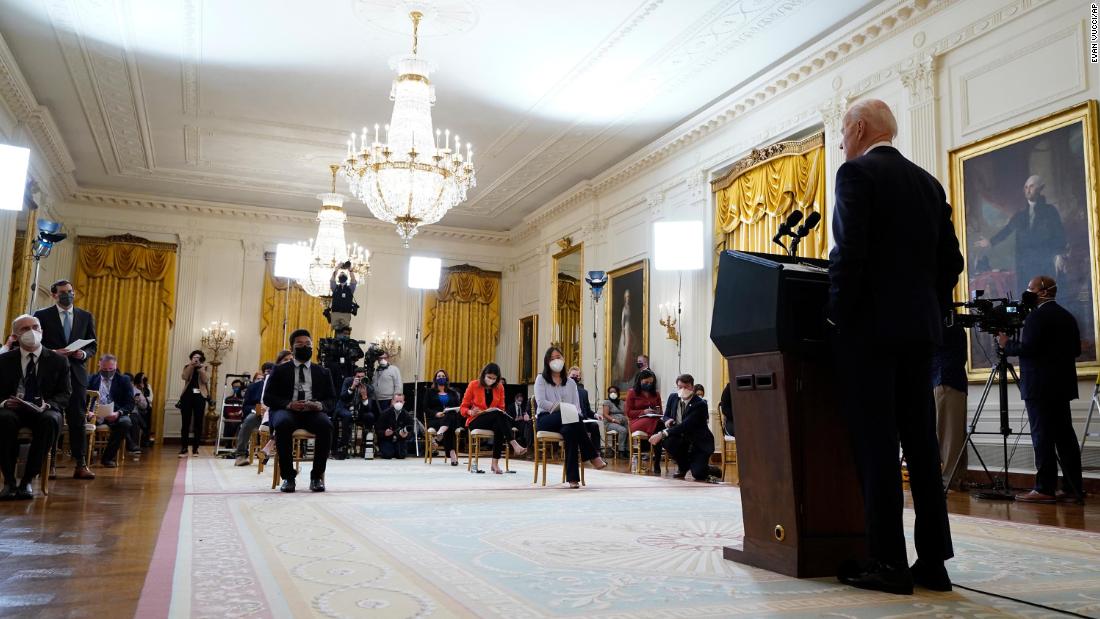News Coverage and Analysis

The White House News Conference serves as a pivotal platform for the dissemination of information from the highest echelons of government to the public. It provides a direct channel for the President and other administration officials to address the nation and the world, offering insights into policy decisions, current events, and matters of public concern.
In the hallowed halls of the White House, where the echoes of history reverberate, a news conference unfolds. Amidst the barrage of questions, one topic that has captivated the nation’s attention is the upcoming clash between the United States and Uruguay on the soccer field.
For an expert analysis of this tantalizing match, we turn to our trusted source usa vs uruguay prediction. As the White House news conference draws to a close, we leave you with this intriguing question: who will emerge victorious in this epic showdown?
The conference generates a wide range of news coverage, from live broadcasts and online updates to in-depth analyses and commentary. This coverage plays a crucial role in shaping public opinion, informing policy debates, and holding the government accountable.
Types of News Coverage
The White House News Conference yields a diverse array of news coverage, each catering to specific audiences and serving distinct purposes:
- Live Coverage: Televised and online broadcasts provide real-time updates, allowing viewers to witness the conference firsthand.
- News Wires: Agencies such as the Associated Press and Reuters distribute concise, objective reports to media outlets worldwide.
- Print Media: Newspapers and magazines publish in-depth articles that analyze the conference’s key points and implications.
- Online News: Websites and social media platforms offer a continuous stream of news, commentary, and analysis.
- Commentary and Analysis: Pundits, experts, and journalists provide their perspectives on the conference, interpreting its significance and potential impact.
Impact on Public Opinion and Policy Decisions
The White House News Conference exerts a profound influence on public opinion and policy decisions. By providing a platform for the government to communicate its message directly to the people, it shapes the public’s understanding of current events and policy choices.
In the hallowed halls of the White House, where newsmakers gather, a recent press conference held the nation’s attention. Amidst the flurry of questions, the topic of our beloved nationals surfaced. Their unwavering spirit and determination have captivated hearts across the country.
As the reporters’ voices echoed through the room, the White House news conference became a testament to the indomitable spirit that unites us all.
- Public Opinion: The conference can influence public sentiment on a wide range of issues, from foreign policy to domestic affairs.
- Policy Debates: The conference provides a forum for the government to present its policy proposals and respond to public concerns.
- Government Accountability: The conference offers an opportunity for the press to hold the government accountable for its actions and decisions.
Presidential Communication and Strategy

During the press conference, the President employed a multifaceted communication strategy to convey messages, shape public perception, and maintain control over the narrative. Through skillful use of rhetoric, body language, and other techniques, the President aimed to establish credibility, build rapport with the audience, and influence public opinion.
Use of Rhetoric
The President’s speech was characterized by carefully crafted language and persuasive appeals. He employed rhetorical devices such as metaphors, analogies, and anecdotes to make complex issues relatable and emotionally resonant. By using vivid imagery and personal stories, the President sought to connect with the audience on a human level and evoke empathy.
Body Language and Nonverbal Cues
Beyond words, the President’s body language and nonverbal cues played a significant role in shaping the message conveyed. His facial expressions, gestures, and posture signaled confidence, authority, and trustworthiness. By maintaining eye contact with the audience and using open and inclusive body language, the President aimed to establish a connection and create a sense of rapport.
Effectiveness of Communication
The President’s communication strategy was largely effective in shaping public perception and achieving the desired outcomes. The skillful use of rhetoric, body language, and other techniques helped the President convey a clear and compelling message that resonated with the audience. By establishing credibility, building rapport, and influencing public opinion, the President successfully controlled the narrative and maintained a positive public image.
Historical Context and Evolution: White House News Conference
The White House News Conference has undergone significant evolution since its inception. Initially, it was a more informal gathering where reporters could ask the President questions. Over time, it has become a more structured and formal event, with set rules and procedures.
Format and Frequency, White house news conference
In the early days, the conference was held irregularly and without a set format. In 1913, President Woodrow Wilson began holding regular weekly conferences, a practice that has continued to the present day. The format of the conference has also evolved, with the President now typically delivering a brief opening statement before taking questions from reporters.
Significance
The White House News Conference has become an important forum for the President to communicate directly with the American people. It is also an opportunity for reporters to hold the President accountable and to get answers to important questions. The conference has played a significant role in American politics, and it has been the setting for some of the most memorable moments in presidential history.
Key Moments
Some of the most important moments in the history of the White House News Conference include:
- President Franklin D. Roosevelt’s “fireside chats,” which he used to communicate directly with the American people during the Great Depression.
- President John F. Kennedy’s press conference following the Bay of Pigs invasion, which was a major turning point in the Cold War.
- President Richard Nixon’s press conference following the Watergate scandal, which led to his resignation.